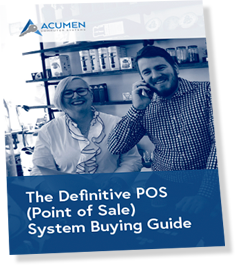Prior to the wonders of technology, there were a lot of risks involved in purchasing and dead stock was a potential outcome. In the worst cases, it would leave businesses with a lot of product and a loss of profit. However, as the customer changes purchase decisions at a moment’s notice, our inventory management system can react accordingly. This enables businesses to improve their profit margins, and pricing structures and have faster reactions to changes in purchase behaviours.
What is Dead Stock?
Dead stock is inventory that is unsellable. Usually, it is because businesses have made or ordered too many of these items, but dead stock can include damaged items, expired goods and leftover seasonal stock. These items generally also have a low-profit margin.
How can I prevent dead stock?
Dead stock can be preventable with the right inventory management system in place. With integrated POS systems, businesses are less susceptible to inventory errors and can maximise their customer base and cash flow so they can continue to grow. At Acumen, our integrated POS and inventory management system provides our customers with real-time data on customer trends and profit margins to assist businesses in their purchasing decisions. And the system also has embedded POS reports to help businesses better manage their stock and cash flow.
So what are some best practices?
Best Practices for Your Inventory Management System
1. Invest in Intuitive Software
Not all inventory management systems are built the same. Some, even in 2022, still require 90% manual input and are simply a storage box of your data. With an integrated EFTPOS system you are investing in intuitive software that predicts customer buying trends and updates stock and raw materials as each purchase order goes through. This results in less wastage of products and no more estimating how much you need.
Intuitive inventory management systems also make stocktaking a breeze and help businesses to grow and expand to multiple locations.
Go Mobile with AcuScan
Acumen has recently launched a mobile scanning application that allows you to scan and look up your products remotely. It works seamlessly with your Acumen POS and inventory management system and provides real-time updates of how much stock is on hand and how much you have left to sell. This is particularly useful for businesses that have a lot of moving parts and potentially make new products or kits using the raw materials available.

2. Utilise Smart Pricing Strategies
The second way that you can avoid liquidating stock is through smart pricing strategies. Determining how to price a product can be challenging, but with an inventory management system, you can track customer behaviours and measure profit margins to accurately price new or incoming products. By doing so, our customers have been able to avoid using Flash Sales as a means to make money and instead have developed a loyal customer base that is happy to purchase products at regular retail prices.
3. Review Reports
POS reports can be the missing piece to your stock issues. They provide an overview of everything that is happening within your business and certain reports can identify where stock is being wasted or where the business is losing money. With over 200 standard reports in the Acumen POS system, there are three particular reports we want to draw your attention to.
- Top 50 Gross Selling Products
This report shows the top 50 products sold over a selected time period and ranks the products by their gross profit. It allows clients to quickly see what is performing well within their business and is a good indicator of if new products are a success. - Stock Value Report
Your stock value report shows businesses how much stock they have. Within this report, you can see the average cost of each item and the total value of the stock left on hand. It can help you understand where the dead stock might be or what is currently slow-selling and allow you to come up with a strategy to remedy the situation. - Exceptional Items
Exceptional item reports provide insight into products that are not sold often. Within these products, some might have a high gross profit margin because it’s a high ticket item but more importantly, it clearly identifies the products with lower profit margins that are not selling. This report will also provide recommendations on how to best manage the inventory of this product and insight into if products are potentially being undersold or sold under the wrong barcode.

4. Look For Ways To Upcycle Or Recycle
While we can try to avoid dead stock using our intuitive inventory management systems, it is not always possible. As business owners, the best tool in your toolbox is creativity. In the coming years, customers will be extremely eco-conscious and continue to pursue sustainability measures with corporations. This can make it incredibly difficult to just “dump products”. If the product isn’t expired and is just not selling well, look at ways you can remarket the product, recycle the product or use the product in a different manner. Some suggestions include turning waste fabrics into tote bags, donating seasonal items to a local charity and selling the working spare parts from damaged items. If you are struggling to come up with ideas, ask your customer base what they would appreciate.
Acumen & Inventory Management Software
Acumen Computer Systems design and develop tailored POS Systems with an advanced inventory management system that facilitates business growth and success. If you are experiencing an excess of dead stock or feel like your inventory management system isn’t assisting your business growth, get in touch with our team by filling in the form below.
